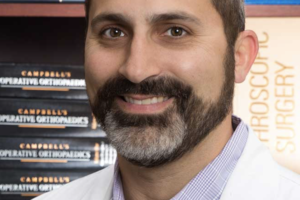![]() EXPERT
EXPERT
Dr. Steven M. DeLuca
Orthopedist
- Camp Hill, Pennsylvania
- Philadelphia College of Osteopathic Medicine
- Accepting new patients
Dr. Steven DeLuca
Dr. Steven M. DeLuca treats patients at the Orthopedic Institute of Pennsylvania. As an orthopedic surgeon, Dr. DeLuca is trained and experienced in the diagnosis and preoperative,...
Does tennis elbow require a surgery?
Steven M. DeLuca, DO
Why does my hip crack every time I move?
Steven M. DeLuca, DO
What is the best way to manage osteoarthritis?
What is the best course of treatment for femur fracture?
We believe my mother dislocated her shoulder. What should we do?
Steven M. DeLuca, DO
partial vs full joint replacment
If there is significant arthritis in more than 1 compartment of the knee, then a partial is not an option-it must be a total knee replacement. Traditionally, the ACL & often the PCL are cut out and “replaced” in a total knee replacement. The knee tends to feel “artificial”. These ligaments are preserved in a partial knee replacement. The knee feels more like a “normal” knee because of the preservation of these ligaments.
There is a small risk of needing additional surgery in a partial knee replacement if arthritis develops in the other compartments of the knee. This would require the partial being converted to a total knee replacement. If this does occur, it is usually possible to convert the partial to a total knee replacement using the same type of knee prosthesis that would be used in a normal total knee replacement (i.e. able to use primary knee replacement components...no need for revision knee replacement components). Patient satisfaction is high after total, partial and even conversion surgeries.
Steven M. DeLuca, DO




